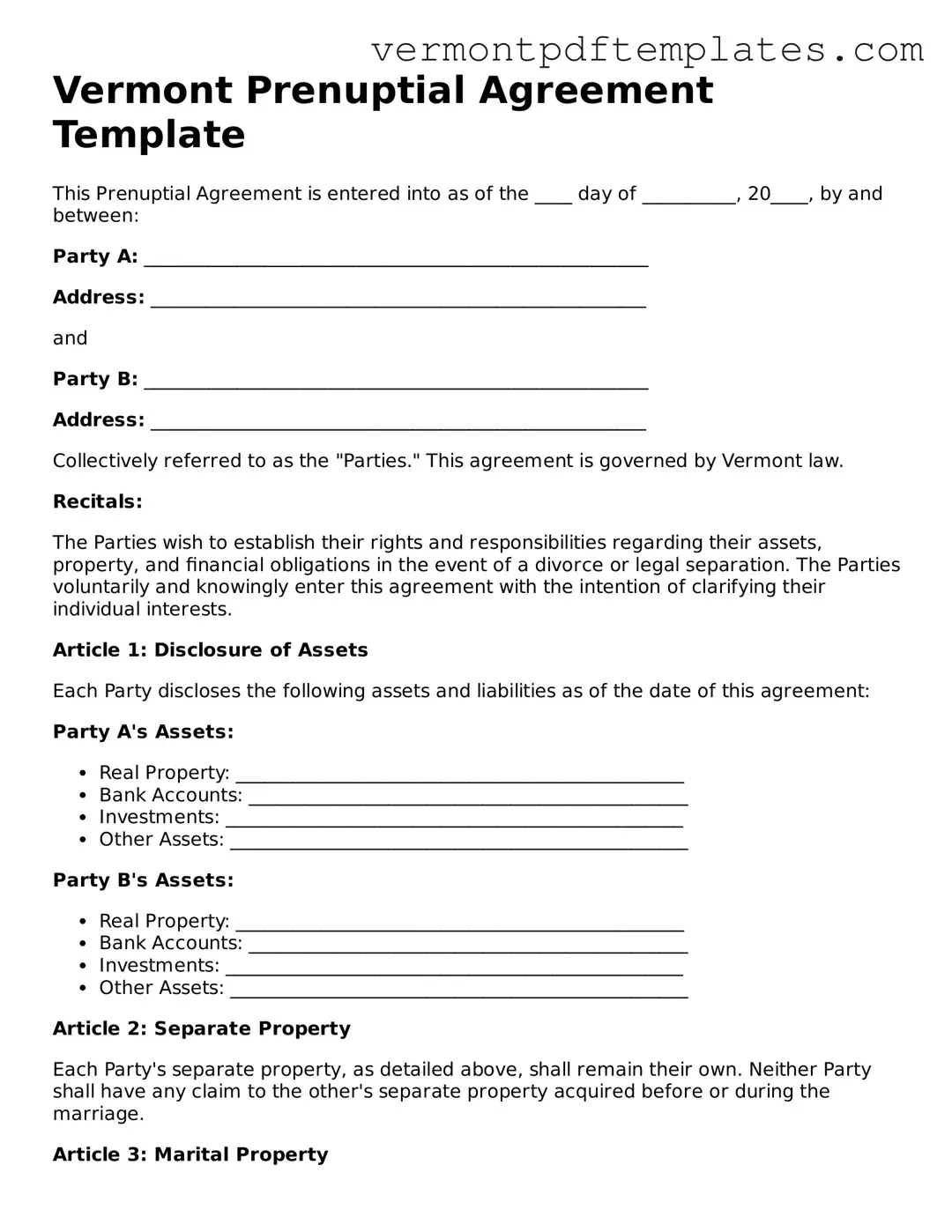A Cohabitation Agreement is similar to a prenuptial agreement in that it outlines the rights and responsibilities of individuals living together. This document is particularly useful for couples who choose to cohabitate without marrying. It can address property ownership, financial responsibilities, and how assets will be divided in the event of a separation. Like a prenuptial agreement, a cohabitation agreement can help prevent disputes and provide clarity about expectations in the relationship.
A Postnuptial Agreement serves a similar purpose to a prenuptial agreement, but it is created after the couple is already married. This document allows spouses to outline how they will handle their assets and debts, especially if their financial situation changes. Just like a prenuptial agreement, a postnuptial agreement can help protect individual interests and clarify financial responsibilities, which can be particularly important in the case of divorce or separation.
A Marital Settlement Agreement is closely related to a prenuptial agreement, as it is often drafted during divorce proceedings. This document outlines the terms of the divorce, including asset division, spousal support, and child custody arrangements. Like a prenuptial agreement, it aims to protect the interests of both parties and ensure that all aspects of the separation are addressed comprehensively.
An Estate Plan can also be compared to a prenuptial agreement, as both involve planning for the future. An estate plan includes documents such as wills and trusts, which dictate how a person's assets will be distributed after their death. While a prenuptial agreement focuses on asset division during marriage or divorce, an estate plan ensures that those assets are handled according to the individual's wishes after they pass away.
A Business Partnership Agreement shares similarities with a prenuptial agreement, especially for couples who own a business together. This document outlines the roles, responsibilities, and profit-sharing arrangements between partners. It also addresses what happens to the business in the event of a separation or divorce, ensuring that both parties are protected and clear on their rights regarding the business.
A Financial Agreement is akin to a prenuptial agreement as it outlines the financial responsibilities and expectations of each partner in a relationship. This document can cover aspects such as debt management, savings goals, and spending habits. By establishing clear financial guidelines, a financial agreement can help prevent misunderstandings and promote harmony in the relationship.
The AAA International Driving Permit Application form is an essential tool for travelers, allowing individuals to drive legally in countries that recognize the permit. It serves as a translation of a state-issued driver’s license into multiple languages and verifies the driver's eligibility. For those looking to apply for an international driving permit, the process can be conveniently managed through resources like OnlineLawDocs.com, ensuring a smooth experience for American citizens preparing for their journeys abroad.
A Child Custody Agreement, while primarily focused on children, has a similar foundation to a prenuptial agreement in that it seeks to protect the interests of the family unit. This document outlines how parents will share custody and make decisions regarding their children's upbringing. By clearly defining roles and responsibilities, a child custody agreement can help minimize conflict and ensure that both parents remain committed to their children's well-being.
A Living Will, while different in focus, shares the principle of planning ahead that is central to a prenuptial agreement. A living will specifies an individual's wishes regarding medical treatment in case they become incapacitated. This document provides peace of mind for both partners, ensuring that their preferences are honored during critical times, much like how a prenuptial agreement protects financial interests.
